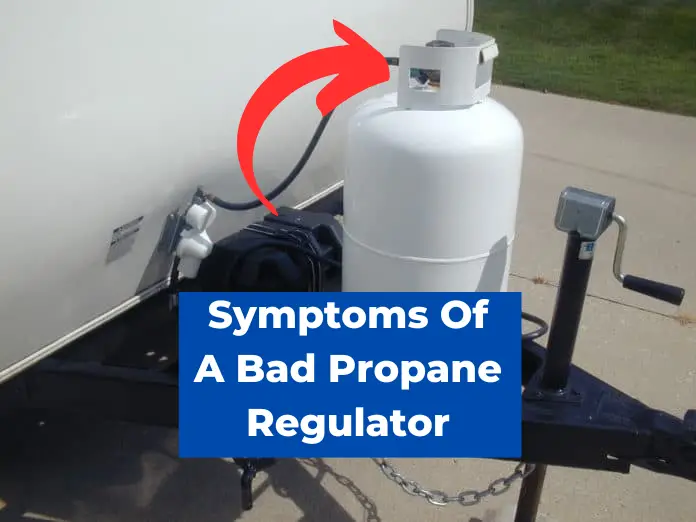Propane regulators are responsible for controlling the pressure of propane gas in the propane tank and delivering it to the appliance. A malfunctioning propane regulator can cause a variety of problems, including low gas pressure, yellow or orange flames, and even gas leaks. It is important to know the symptoms of a bad propane regulator to prevent accidents and ensure the safe operation of your propane-powered appliances.
If you suspect that your propane regulator is not functioning properly, it is important to address the issue immediately. This may involve replacing the regulator or seeking the help of a professional technician. By being aware of the symptoms of a bad propane regulator and taking prompt action, you can ensure the safe and efficient operation of your propane-powered appliances.
What is a Propane Regulator?
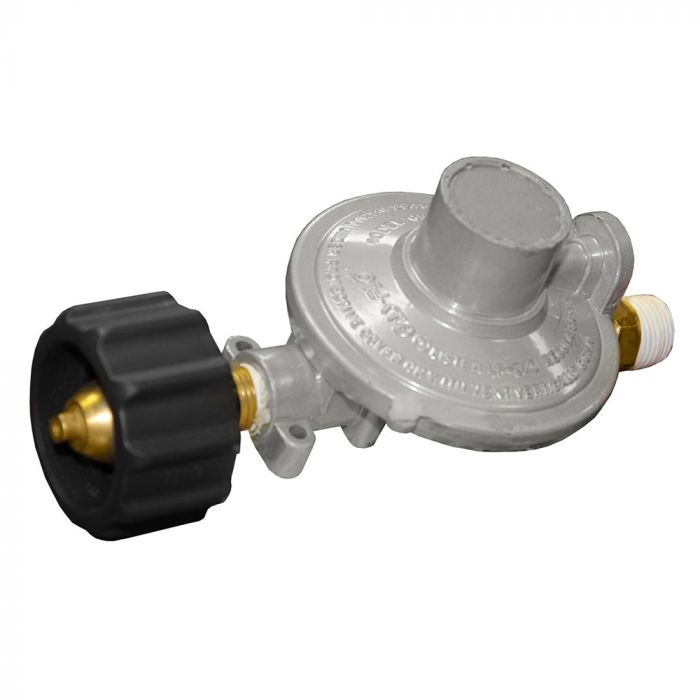
A propane regulator is an essential component of any propane gas system. It is responsible for regulating the flow of propane gas from the propane tank to the appliance. The regulator ensures that the propane gas is delivered at a consistent pressure, which is necessary for the appliance to function properly.
Propane regulators come in different shapes and sizes, but they all have the same basic function. They are typically located near the propane tank and are connected to the tank with a hose. The propane regulator is designed to reduce the high pressure of the propane gas in the tank to a lower pressure that is suitable for use in appliances.
Propane regulators are designed to be durable and reliable, but they can sometimes malfunction. When this happens, it can cause a range of problems, including improper combustion, low propane pressure, and other issues. It is important to be aware of the signs of a bad propane regulator so that you can address the problem before it causes any serious damage.
Symptoms of a Bad Propane Regulator
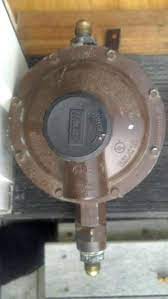
A propane regulator is an essential component of any propane-powered appliance. It regulates the flow of propane from the tank to the appliance, ensuring that the appliance gets the correct amount of propane for efficient and safe operation. However, like any other mechanical device, propane regulators can malfunction, and when they do, they can cause a range of problems. Here are some of the most common symptoms of a bad propane regulator:
Low Gas Pressure or Weak Flames
One of the most common symptoms of a bad propane regulator is low gas pressure or weak flames. If you notice that your propane-powered appliances are not operating at their normal level of performance, the regulator may be the culprit. Weak flames, especially if they are accompanied by a hissing sound, are a clear indication that the regulator is not delivering propane at the correct pressure.
Gas Leaks
Another common symptom of a bad propane regulator is gas leaks. Gas leaks can be dangerous and should be addressed immediately. If you smell gas or notice a hissing sound coming from your propane tank or appliances, turn off the gas supply immediately and call a professional to inspect the system.
Yellow or Orange Flames
Propane-powered appliances should produce strong blue flames. If you notice yellow or orange flames, it’s a sign that the propane is not burning efficiently. This can be caused by a malfunctioning regulator, which is not delivering propane at the correct pressure.
Soot Buildup on Appliances
If you notice soot buildup on your propane-powered appliances, it’s a sign that the appliance is not burning propane efficiently. This can be caused by a malfunctioning regulator, which is not delivering propane at the correct pressure.
Difficulty Starting Appliances
If you’re having difficulty starting your propane-powered appliances, it may be a sign that the regulator is not delivering propane at the correct pressure. This can cause the appliance to fail to ignite or produce weak flames.
Leaping, Unstable, Or Sputtering Flames
If you notice leaping, unstable, or sputtering flames coming from your propane-powered appliances, it’s a sign that the regulator is not delivering propane at the correct pressure. This can cause the appliance to operate inefficiently and can even be dangerous.
Propane Smell
If you smell propane, it’s a sign that there may be a gas leak in your propane system. Turn off the gas supply immediately and call a professional to inspect the system.
Popping and Unusual Sounds
If you hear popping or other unusual sounds coming from your propane-powered appliances, it may be a sign of a malfunctioning regulator. The regulator may be delivering propane at the incorrect pressure, causing the appliance to operate inefficiently.
Automatic Changeover Malfunctioning
If you have an automatic changeover system that switches between two propane tanks, and you notice that it is malfunctioning, it may be a sign that the regulator is not working correctly. The changeover system may be unable to switch between the tanks because the regulator is not delivering propane at the correct pressure.
Your Appliances Won’t Light
If your propane-powered appliances won’t light, it may be a sign that the regulator is not delivering propane at the correct pressure. This can cause the appliance to fail to ignite or produce weak flames.
Causes of a Bad Propane Regulator
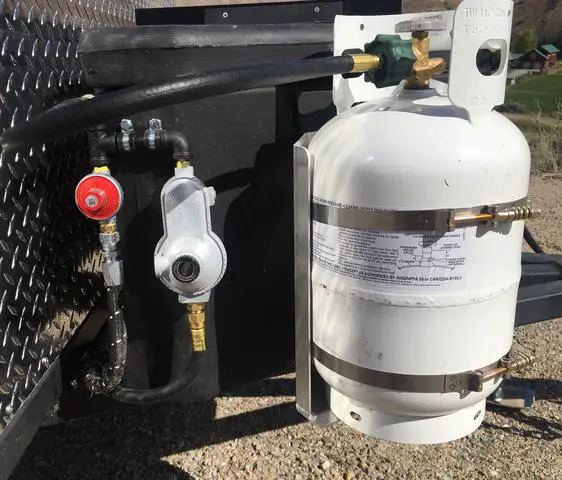
A propane regulator is an essential component of any propane system. It controls the flow and pressure of propane gas from the tank to the appliance. Over time, however, regulators can become faulty, leading to a range of problems such as low gas pressure, uneven heating, or poor performance. There are several causes of a bad propane regulator, including:
Age and Wear
Propane regulators are subject to wear and tear over time, just like any other mechanical device. As a regulator ages, its internal components can become worn or damaged, leading to a variety of problems such as low gas pressure, gas leaks, or poor performance. In general, regulators should be inspected and replaced every 10 years, or sooner if they show signs of wear or damage.
Contamination
Propane regulators can become contaminated with dirt, debris, or other foreign materials, which can clog the internal components and cause the regulator to malfunction. Contamination can also cause the regulator to leak gas, which can be a serious safety hazard. To prevent contamination, it is important to keep the propane tank and regulator clean and free of debris.
Damage or Impact
Propane regulators can become damaged or dented due to impact or rough handling. Even a small dent or scratch can cause the regulator to malfunction, leading to low gas pressure or gas leaks. It is important to handle propane regulators with care and to inspect them regularly for signs of damage.
Freezing
In cold weather, moisture in the propane can cause the regulator to freeze, resulting in poor performance or complete blockage. To prevent freezing, it is important to keep the regulator and propane tank dry and to use a regulator cover or insulation in cold weather.
Submerged In Water
If a propane tank or regulator becomes submerged in water, it can become damaged or corroded, leading to gas leaks or other safety hazards. To prevent water damage, it is important to keep the propane tank and regulator dry and to avoid storing them in low-lying areas or areas prone to flooding.
Improper Installation
Propane regulators must be installed correctly to ensure proper performance and safety. If a regulator is installed incorrectly, it can lead to gas leaks or other safety hazards. It is important to follow the manufacturer’s instructions carefully when installing a propane regulator, or to hire a professional to install it for you.
How to Test a Propane Regulator
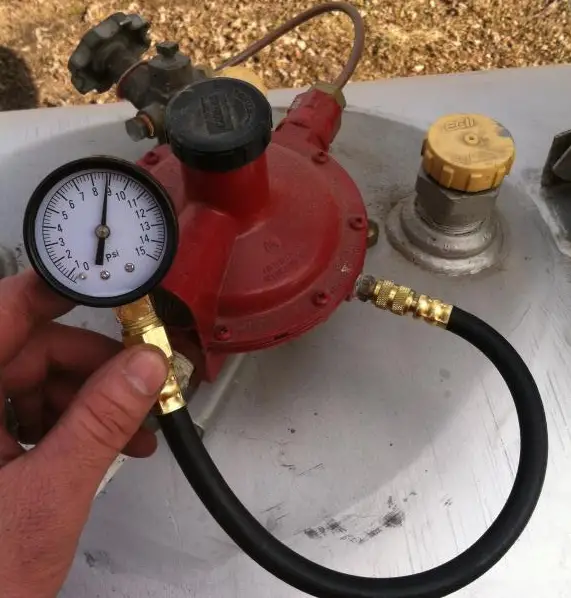
Testing a propane regulator is important to ensure that it is functioning correctly and safely. Here are some methods to test a propane regulator:
Blowing Air Through The Hose
One way to test a propane regulator is to blow air through the hose. Disconnect the hose from the propane tank and blow air through it. If there is no obstruction, the hose is clear. If there is an obstruction, it may be a sign of a bad propane regulator.
Flow Pressure Test
Another way to test a propane regulator is to perform a flow pressure test. To do this, turn off all the propane appliances and disconnect the regulator from the propane tank. Turn on the propane tank valve and wait for a few seconds. Reconnect the regulator to the propane tank and turn on one propane appliance. If the flame is weak or the appliance does not work, it may be a sign of a bad propane regulator.
Using a Soap Solution
Using a soap solution is another method to test a propane regulator. Mix soap with water and apply the solution to the connections between the propane tank, regulator, and hose. Turn on the propane tank valve and wait for a few seconds. If bubbles form, it may be a sign of a gas leak and a bad propane regulator.
Lock Up Test
The lock-up test is another way to test a propane regulator. To do this, turn off all the propane appliances and disconnect the regulator from the propane tank. Turn on the propane tank valve and wait for a few seconds. Reconnect the regulator to the propane tank and turn on one propane appliance. If the flame is strong for a few seconds and then weakens, it may be a sign of a bad propane regulator.
Using a Manometer
Using a manometer is the most accurate way to test a propane regulator. A manometer measures the pressure of the propane gas. To use a manometer, disconnect the regulator from the propane tank and connect the manometer to the regulator. Turn on the propane tank valve and wait for a few seconds. The manometer should read between 10 and 14 inches of water column. If the pressure is too high or too low, it may be a sign of a bad propane regulator.
How to Replace a Propane Regulator
If you’ve identified the symptoms of a bad propane regulator above and it is determined that the propane regulator is faulty, the following steps can be taken to replace it:
- Turn off the gas supply by closing the valve on the propane tank.
- Disconnect the regulator from the propane tank and gas line using a wrench.
- Inspect the new regulator to ensure it is the correct size and type for the propane system.
- Connect the new regulator to the propane tank and gas line using a wrench, making sure that the fittings are tight and secure.
- Turn on the gas supply by opening the valve on the propane tank.
- Test the new regulator by turning on a gas appliance and checking for proper flame color and pressure.
Here’s a great video showing how to replace a bad propane regulator:
It is important to follow the manufacturer’s instructions when replacing a propane regulator to ensure proper installation and operation. If unsure about how to replace the regulator, it is recommended to consult a professional.
Check out our other helpful RV repair guides while you’re here:
How to switch an RV hot water heater from propane to electric

